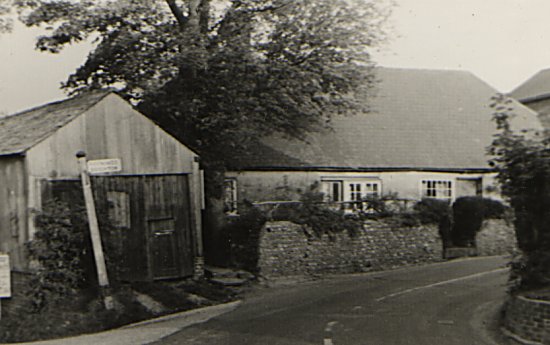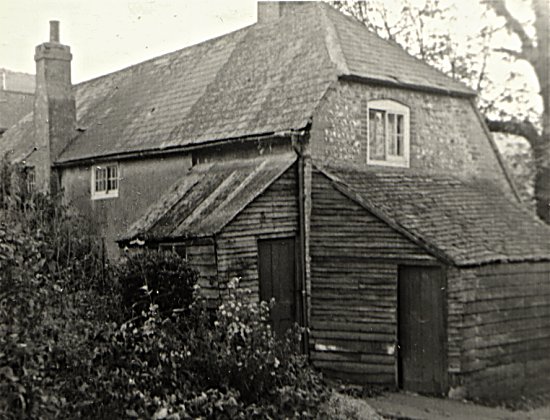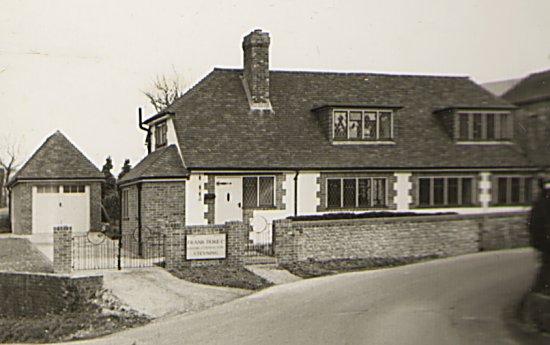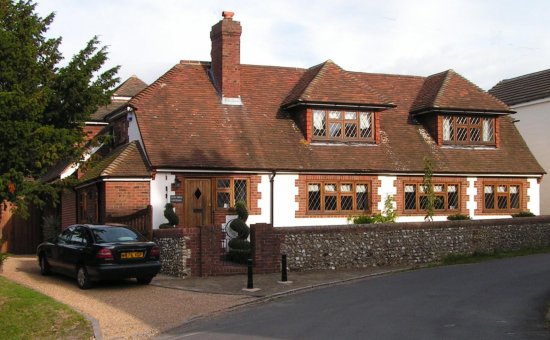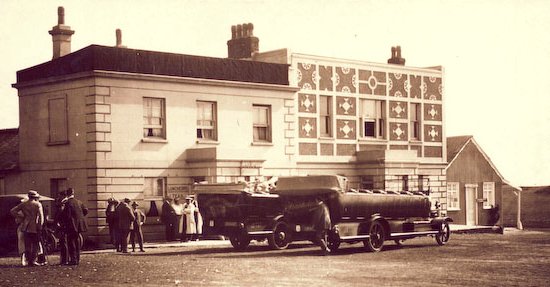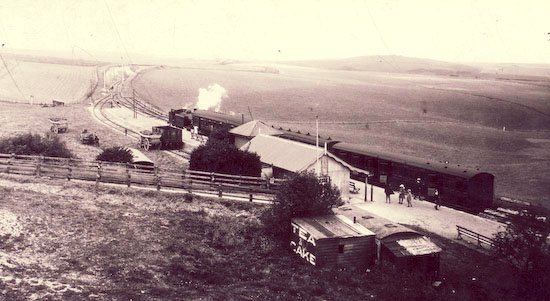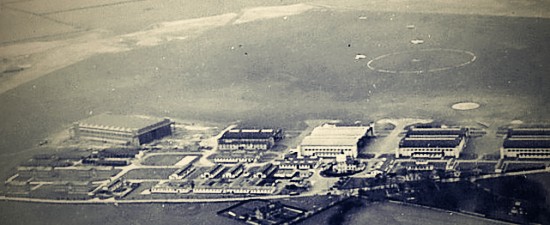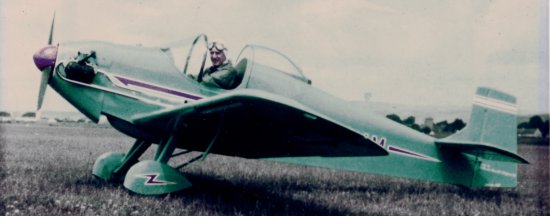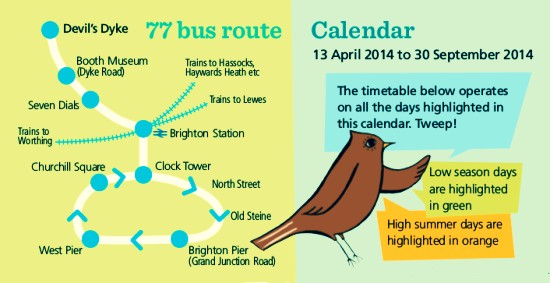
As from today, there is a full daily bus service from the Dyke to central Brighton. Buses run (roughly) every 45 minutes and National Trust members can park up there for free. Here’s the timetable [PDF]. The service reverts to weekends only in September.
Category Archives: Devil’s Dyke
Rave off

The Argus reports on the National Trust struggle to restore the status quo ante bellum:
More than 2,000 ravers attended leaving rubbish, including smashed bottles, beer cases, clothing and gas canisters strewn across the site after they partied for more than 24 hours. Volunteers helped to clear about 250 bags of waste ..
Charlie Cain, head ranger of the Devil’s Dyke estate, said [that] .. there is broken glass all over the Downs that is going to cause problems for years.
Elsewhere, the head ranger said:
The mess left behind after [the] rave at Devil’s Dyke was terrible. Fences and gates were cut and cattle had been separated from their water supply.
Updated 2nd June.
Local history resumes

After a four month furlough, Fulking local history essays resumed earlier this month with William Axon’s 1897 essay on Poynings and Fulking, A Ruskin Pilgrimage. Such essays don’t usually appear on the home page (they are too long). They do show up in the ‘Recent Posts’ list in the left sidebar but are easy to miss there. If such posts interest you, then you should just check the list provided in the ‘Local History’ menu item under ‘About Our Village’ every few weeks to see if something new has appeared at the top. The purpose of the present note is to draw your attention to the fact that today sees the publication of no fewer than three local history items: Tony Brooks’s history of the Yew Tree Cottage site and biographical pieces on two of the former residents Albert E. Browne OBE and his son Ken (Memories of Devil’s Dyke).
Yew Tree Cottage
Clematis Cottage seems to have been the larger of the two, having two bedrooms, a scullery, a sitting room and a privy. Yew Tree Cottage was slightly smaller, but far better equipped for those days. It had two bedrooms, a scullery, a brick and tile outside privy and a kitchen with a tiled floor, fitted cupboards, a range and an oven.
Ross and Zeffie Jeffries purchased the cottage in 1956 and they undertook considerable renovation works, which were completed in 1957. The building was almost entirely demolished, along with the wheelwright’s workshop and other outbuildings, and replaced with a similar sized, modern bungalow and detached garage. To comply with conditions attached to the planning consent for the new bungalow, it had to be no larger than the original building and had to retain some of the features of the original cottage. However, on the new building the dormer windows faced the road, whilst on the original cottage they were at the rear. It seems likely that the current name, ‘Yew Tree Cottage’, was adopted after the 1957 reconstruction.So named from the Yew tree and Clematis which once graced the front of the cottages. Estimated to be about 400 years old; was formerly two cottages each containing four rooms.
Built of rock — the walls of which have in recent years been rendered with a covering of concrete — and timbers from ancient ships, is structurally very sound, but attention is sadly needed to its decaying doors and window frames. The roof was originally of thatch but, within the last century, has been replaced with slates.
It is a great pity that our Minister of Health cannot see his way to adopt the Hobhouse Report[1] of 1946, which recommended the restoration of such property. What a blessing would be conferred on the occupants of this and many other rural cottages.
The West cottage, ‘Yew Cottage’, was, in the dim past, used by the inhabitants of the village and surrounding cottages as a bacon curing centre, and many hams, hands and sides of pork have been ‘cured’ in its enormous open fireplace, still extant.
The hut adjoining Yew Cottage was used for many years by the Barber family[2] as a carpenter’s and wheelwright’s shop, and many Sussex wagons have trundled from beneath its roof. In later years (within the memory of the occupant), this hut was used as a School for Carpentry and Joinery and was attended by many village lads. In those days, there were very few counter attractions, the distant ones being available only to the fortunate ones who possessed ‘cushioned’ tyred bicycles.
Its water supply, before the installation of the ‘village pump’, was from a now covered-in well in the scullery, still intact beneath its crust of concrete. The present tenant has often been tempted to tap this supply, using it in preference to the present one, which has been the cause of many ‘cuss’ words on finding an exhausted water store when, at the ‘crack of dawn’, he arises to have a ‘brew up’.
One day perhaps, in the remote future, we may be blessed with H. & C. and W.C. E.L. [electric light] we already have.
The July 1957 issue of St. Andrews Quarterly gave the new building a restrained welcome:
A short history of Yew Cottage was published a few years ago so we now mention the alterations which have recently been carried out by the owner. As will be seen from the photograph [above], its ‘face’ and in fact its interior have been completely altered, and although it is a pity to see the old building so altered we must admit that the builders have succeeded in producing an artistic effect on modern lines, and in keeping with the village. A pleasing garage has been erected in place of the old smithy’s building which was, after all, a bit of an eyesore, and formed a blind corner, dangerous to pedestrians and motorists alike.
After Zeffie Jeffries died in 2002, it was sold to the present owners who added a two-storey extension to the rear of the bungalow in 2006 and incorporated a double garage.
Tony Brooks
Footnotes:
[1] The Hobhouse Report led directly to the National Parks and Access to the Countryside Act 1949 which created the original National Parks. Sir Arthur Hobhouse had recommended that the South Downs be included. Six decades later it was the last on his list to be so designated.
[2] Members of the Barber family lived in Fulking for much of the nineteenth century. The 1841 census records list George Barber, who was born in Poynings, and his son Nelson as carpenters. By 1861, three of his sons, Nelson, Alexander and Charles are all working as carpenters. In 1881, George, now aged 82, and his son Charles are still in the village working as carpenters. George died in 1887 at the age of 88 and the then rector, Francis Gell, wrote “My dear old Clerk” next to his name in the Parish Register. George’s branch of the Barber family may well have lived in Yew and Clematis cottages.
[Copyright © 2014, Anthony R. Brooks. Adapted from Anthony R. Brooks (2008) The Changing Times of Fulking & Edburton. Chichester: RPM Print & Design, pages 147-148.]
Memories of Devil’s Dyke
[The memoir that follows was written by Ken Browne (1923-2009), the eldest son of Albert Browne. Ken was born at the Dyke Hotel and later lived at Yew Tree Cottage.]
At the time, the hotel was regarded as a grand place, although it was lit with oil lamps and as children we had to take one of these or a candle to light our way to bed – something we found quite scary! There was a public bar, a saloon bar, a smoking room, a ladies room and my mother ran a tearoom at the western end of the hotel. It was very popular and people arrived in charabancs (forerunners of today’s coaches). These were quite a sight: they had solid tyres, every row of seats had its own door, the roof could be opened by the driver turning a handle (an exercise that took some five minutes to complete) and they had carbide headlamps. One event I remember well was a visit by the Duke of York [later King George VI] who, to mark his visit, ceremoniously unveiled a seat at the top of the steep, north slope of Devil’s Dyke.
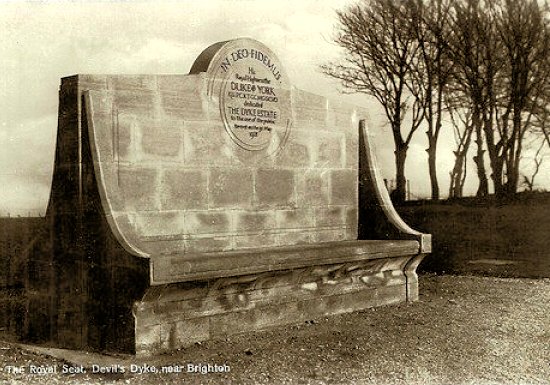
There were three different ways to Poynings school from the Dyke and we nicknamed them Bridle, Chalky, and Grassy. Bridle path was a very gentle descent around the south side of the hotel. The Chalky and Grassy paths went down from the north side and when it was wet they were very slippery. It took us about half an hour to make our way to the foot of the Downs and then walk through Poynings village to the school. After school, the climb back up the hill took three quarters of an hour and was far more difficult (as you can imagine) and in winter it was dark by the time we got home. A few years later when my brother Vernon turned five there were three of us making the trip.
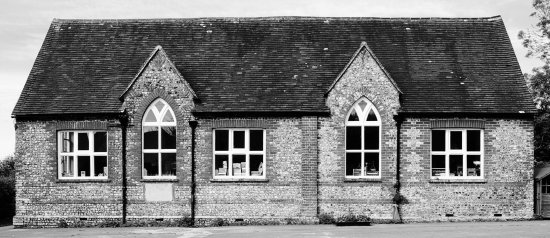
Saturday was always shopping day. We would walk to the Dyke Railway Station at about 8.30am — which was much easier than walking to school and more exciting. Mother’s return fare was eight pence and a return ticket for each child was four pence. The journey to Brighton took thirty minutes and as we got nearer to Brighton it became more exciting as we had each been promised a toy of some description. I wasn’t Mother’s pet but she knew that I wanted an aeroplane, that Irene wanted a doll, and that Vernon was happy to take ‘pot luck’.
My father was very strict, being a retired Army man who had served years in India, but we were a very happy family. I feel we were very fortunate to have lived at the hotel, with the fresh air and sunshine in summer and the snow in the winter.
When the Dyke Hotel was taken over by another brewery (I cannot remember the date this happened), we were obliged to move. My father found Yew Tree Cottage in Fulking, which had no electricity (there was no electricity anywhere in Fulking at the time). There were two hand pumps on The Street and we got our water from the one outside Fulking Farmhouse. The other pump was where the telephone kiosk now is and there was a drinking fountain opposite Laurel House.
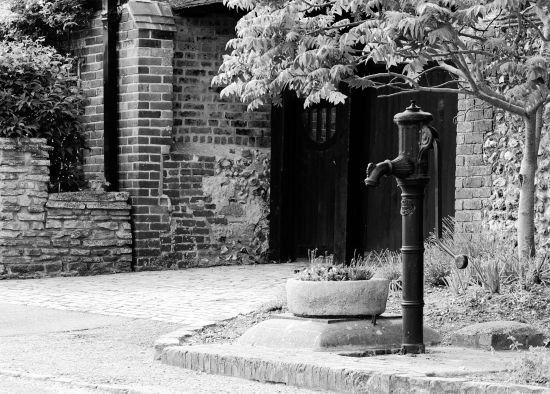
War broke out in 1939 and my father rejoined the army almost immediately. I volunteered for the RAF at the age of 17, my sister joined the Army Training Services (ATS) and later, my brother Vernon was called up for the navy. Meanwhile, mother was then living at home with the newest and youngest member of the family — Gordon, who was born in Fulking.
Following my discharge from the RAF, I returned to France as a representative for British Petroleum (BP) and there I married a French girl I had met during my war service there. I was given a privileged residence Identity Card and stayed there for a few years. Later I obtained my pilots license and purchased my own plane, a Druine Turbulent, single seater, with a top speed of 85 knots. For some 26 years, I flew this regularly between France and a small private airstrip at Golden Cross in East Sussex.
Ken Browne, 2007
[Copyright © 2014, the estate of Ken Browne. This memoir first appeared in Anthony R. Brooks (2008) The Changing Times of Fulking & Edburton. Chichester: RPM Print & Design, pages 417-421.]
Corrected April 2016: date of Ken Browne’s death, with one other amendment.
Some other material relevant to the C19 and C20 history of the Dyke:
Police retreat from Dyke
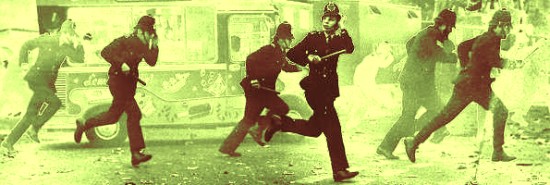
The Telegraph reports:
An illegal rave in a National Park was still going strong after nearly 24 hours after police admitted there were not enough officers to close it down.
Officers struggled to control the crowds and eventually gave up, leaving residents to endure the pounding music.
One resident in nearby Poynings, who did not wish to be named, said last night: “It’s really loud and it’s been going on all night and all day. .. I can see why it might be difficult to move them off the hill but I can’t understand why there aren’t more police officers to get rid of them.”
A [police] spokesman said: “At present the assessment is that it would not be possible or safe to close the event down, given the number of police officers available. “
The Argus has a long report:
“I spoke to one police officer nearby and asked them what they were going to do about it and I was told ‘we only have four officers, so there’s nothing we can do’.”
And the Mail also has the story this morning:
The rave, which is still going strong more than 24 hours after it started, shows no sign of stopping and party-goers have warned it could ‘carry on for days’.
A [police] spokesman said: ‘Overnight it was assessed that due to the darkness, rain, and numbers present, it was not appropriate or practical to attempt to close the gathering safely. With daylight, officers have been re-assuring local residents that action is being taken .. At present the assessment is that it would not be possible or safe to close the event down, given the number of police officers available.’
There is an informative YouTube video here.
Poynings residents express their views in an Argus comment forum:
7:21pm Sun 25 May 14 binbag says
It’s still going on now. No sleep again tonight. Don’t think the police stopped people going up there early enough. As the police are taking no action won’t this just encourage this happening more often.”
7:25pm Sun 25 May 14 Josie81 says
It’s a bloody nightmare here in Poynings. No sleep last night, can’t work today (I am studying for exams), and tonight seems set to be just as bad as last night. Police don’t seem interested in doing anything about it. Probably all down at the beach …
7:35pm Sun 25 May 14 binbag says
I’m in Poynings too. Was so loud last night. Doesn’t seem as loud now but that could be just the way the winds blowing. Too exhausted to do anything today. Hate to be a killjoy but hope it pours with rain tonight!
7:40pm Sun 25 May 14 Josie81 says
Yes, BB, nature looks set to take revenge with lots of lovely rain tomorrow 🙂 What a horrible mess these ravers have made of our beautiful Downs. Feel very sorry for the poor animals trying to rear their young in peace.
METRO now says:
By 7:00am on Monday everyone had gone and just one car remained — which had broken down.
The Argus reports a police post mortem in June:
Senior officers .. blamed rain and darkness for their decision to let the 2,000-strong party go on for more than 24 hours. .. Temporary Chief Constable Giles York .. said “It was dark, it had been raining on and off and footing was unsecure. [Raves] are not safe places. .. It’s not as simple as walking in and taking the power lead out.”
[Updated often.]
A Ruskin Pilgrimage
[The essay that follows comprises a transcription of the twelfth chapter of Bygone Sussex written by William E.A. Axon and published in 1897. The illustrations also come from the book. Apart from a few minor punctuation changes, the text is exactly as it appeared originally.]
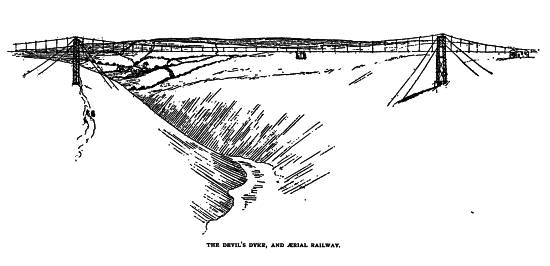 A favourite excursion of those who run down to the seaside to consult “one of the best of physicians” — he whom Thackeray has well described as “kind, cheerful, merry Doctor Brighton” — is to the Devil’s Dyke. To that picturesque spot with an evil name there come pilgrims by coach, by train, and on foot to gaze upon the wide expanding landscape of the Weald, to have their fortunes told by the gipsy “queens” who ply their trade in flagrant defiance of the statute book, or to disport themselves in the somewhat cockney paradise that has arisen on this lovely part of the South Downs. The Dyke itself is the work of Mother Nature in one of her sportive moods, when she seems to imitate or to anticipate the labours of man. Here she has carved out a deep trench that looks as though it were the work of the Anakim. It has its legendary interest also, for the Sussex peasantry hold, or held, that it came into existence by the exertions of the “Poor Man,” as the Father of Evil is here euphemistically called. Looking over the fertile Weald, his Satanic Majesty was grievously offended by the sight of the many churches dotted over the smiling plain, and he decided to cut a passage through the Downs so that the waters of the sea might rush through the opening and drown the whole of the valley. An old woman whose cottage was in the vicinity, hearing the noise made by the labouring devil in his work of excavation, came to her window, and holding her candle behind a sieve, looked out. The “Poor Man” caught sight of the glimmering light, and hastily concluded that the sun was rising. The mediaeval devil could only do his malicious deeds in the dark, and so he slunk away, leaving the Dyke incomplete, as we now see it. Lest anyone should doubt this story, the marks of the “Poor Man’s” footprints are still pointed out on the turf.
A favourite excursion of those who run down to the seaside to consult “one of the best of physicians” — he whom Thackeray has well described as “kind, cheerful, merry Doctor Brighton” — is to the Devil’s Dyke. To that picturesque spot with an evil name there come pilgrims by coach, by train, and on foot to gaze upon the wide expanding landscape of the Weald, to have their fortunes told by the gipsy “queens” who ply their trade in flagrant defiance of the statute book, or to disport themselves in the somewhat cockney paradise that has arisen on this lovely part of the South Downs. The Dyke itself is the work of Mother Nature in one of her sportive moods, when she seems to imitate or to anticipate the labours of man. Here she has carved out a deep trench that looks as though it were the work of the Anakim. It has its legendary interest also, for the Sussex peasantry hold, or held, that it came into existence by the exertions of the “Poor Man,” as the Father of Evil is here euphemistically called. Looking over the fertile Weald, his Satanic Majesty was grievously offended by the sight of the many churches dotted over the smiling plain, and he decided to cut a passage through the Downs so that the waters of the sea might rush through the opening and drown the whole of the valley. An old woman whose cottage was in the vicinity, hearing the noise made by the labouring devil in his work of excavation, came to her window, and holding her candle behind a sieve, looked out. The “Poor Man” caught sight of the glimmering light, and hastily concluded that the sun was rising. The mediaeval devil could only do his malicious deeds in the dark, and so he slunk away, leaving the Dyke incomplete, as we now see it. Lest anyone should doubt this story, the marks of the “Poor Man’s” footprints are still pointed out on the turf.
 Here, too, are the evidences of an oval camp with massive rampart and broad fosse, occupied probably by the Romans, whose coins have been found, and by still earlier warlike inhabitants of the district. When the eye has satisfied itself with the fine prospect, landward and seaward, we may undertake a short pilgrimage to a little known Ruskin shrine. Below us northward are the villages of Poynings, Fulking, and Edburton. The last is known to archaeologists for its leaden font, which is said to date from the end of the twelfth century. Here Laud, the pious, ambitious, unscrupulous, and unfortunate prelate, is said to have officiated. To him is attributed the gift of the pulpit and altar rails in the church.
Here, too, are the evidences of an oval camp with massive rampart and broad fosse, occupied probably by the Romans, whose coins have been found, and by still earlier warlike inhabitants of the district. When the eye has satisfied itself with the fine prospect, landward and seaward, we may undertake a short pilgrimage to a little known Ruskin shrine. Below us northward are the villages of Poynings, Fulking, and Edburton. The last is known to archaeologists for its leaden font, which is said to date from the end of the twelfth century. Here Laud, the pious, ambitious, unscrupulous, and unfortunate prelate, is said to have officiated. To him is attributed the gift of the pulpit and altar rails in the church.
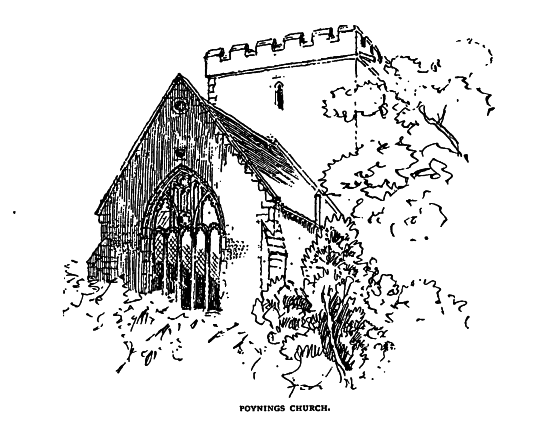 Descending the steep slope of the South Downs, and breathing the invigorating air which has won so many praises, we are soon in a rustic road that leads to the church of Poynings. The church is one of great interest and dignity. It is early Perpendicular, cruciform, and has a square central tower. The alms box is an ancient thurible of carved wood. “Puningas” — and Punnins is still a local pronunciation — was restored, with other lands, to the thane Wulfric by King Eadgar, who pardoned some of his vassal’s slight offences in consideration of receiving 120 marcs of the most approved gold. When Domesday Book was compiled the manor was held by a feudatory of the powerful William de Warren. Inside the church are some monuments of those stalwart soldiers, the Poynings, and outside there are still traces of their ancient home from the time of Stephen to that of Henry VII. Their name is enduringly written in our history in “Poyning’s law“. In 1294, Sir Michael, lord of this manor, was summoned to Parliament as the first Baron de Ponynges. His son Thomas was slain in the great sea-fight at Sluys. The son of this soldier was Sir Michael, the third baron, who was with Edward III at Crecy, and at the surrender of Calais in 1347. When he returned to his castle, he was appointed one of the guardians of the Sussex coast, then in danger of a French invasion. When he died in 1368, he bequeathed “to him who may be my heir” a “ruby ring which is the charter of my heritage of Poynings”. The barony passed by the distaff to the Earls and Dukes of Northumberland. Sir Edward Poynings, a grandson of the sixth baron, had his home at Ostenhanger in Kent. Whilst Lord Deputy of Ireland, he induced the Irish Parliament, in 1494-5, to pass a measure by which all the laws of England were made to be of force in Ireland, and no bill could be introduced into the Irish Parliament without the previous sanction of the Council of England. He died in 1521 the Governor of Dover Castle. “Who more resolved than Poynings?” asks Lloyd, “whose vigilancy made him master of the Cinque Ports, as his valour advanced him general of the low-county forces, whom he led on to several services with such success, and brought off, with the loss of not above an hundred men, with honour from the Lady Margaret, and applause from the whole country.” Poynings passed by sale to the Brownes, and by failure of heirs reverted to the crown in 1797.
Descending the steep slope of the South Downs, and breathing the invigorating air which has won so many praises, we are soon in a rustic road that leads to the church of Poynings. The church is one of great interest and dignity. It is early Perpendicular, cruciform, and has a square central tower. The alms box is an ancient thurible of carved wood. “Puningas” — and Punnins is still a local pronunciation — was restored, with other lands, to the thane Wulfric by King Eadgar, who pardoned some of his vassal’s slight offences in consideration of receiving 120 marcs of the most approved gold. When Domesday Book was compiled the manor was held by a feudatory of the powerful William de Warren. Inside the church are some monuments of those stalwart soldiers, the Poynings, and outside there are still traces of their ancient home from the time of Stephen to that of Henry VII. Their name is enduringly written in our history in “Poyning’s law“. In 1294, Sir Michael, lord of this manor, was summoned to Parliament as the first Baron de Ponynges. His son Thomas was slain in the great sea-fight at Sluys. The son of this soldier was Sir Michael, the third baron, who was with Edward III at Crecy, and at the surrender of Calais in 1347. When he returned to his castle, he was appointed one of the guardians of the Sussex coast, then in danger of a French invasion. When he died in 1368, he bequeathed “to him who may be my heir” a “ruby ring which is the charter of my heritage of Poynings”. The barony passed by the distaff to the Earls and Dukes of Northumberland. Sir Edward Poynings, a grandson of the sixth baron, had his home at Ostenhanger in Kent. Whilst Lord Deputy of Ireland, he induced the Irish Parliament, in 1494-5, to pass a measure by which all the laws of England were made to be of force in Ireland, and no bill could be introduced into the Irish Parliament without the previous sanction of the Council of England. He died in 1521 the Governor of Dover Castle. “Who more resolved than Poynings?” asks Lloyd, “whose vigilancy made him master of the Cinque Ports, as his valour advanced him general of the low-county forces, whom he led on to several services with such success, and brought off, with the loss of not above an hundred men, with honour from the Lady Margaret, and applause from the whole country.” Poynings passed by sale to the Brownes, and by failure of heirs reverted to the crown in 1797.
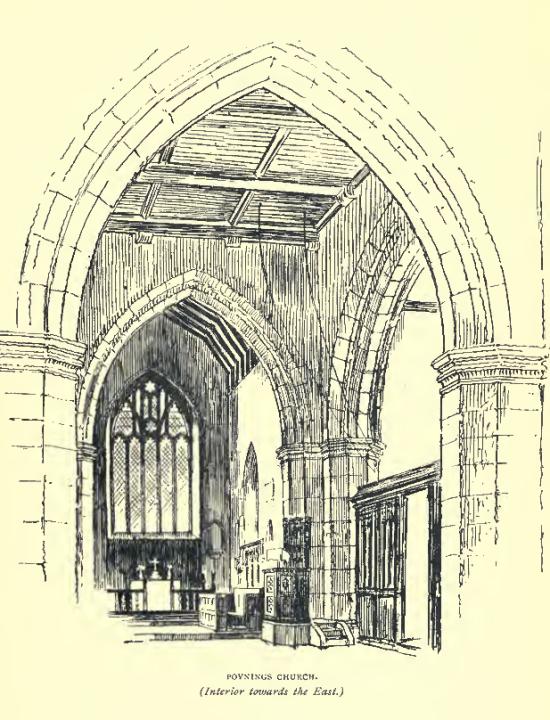
From Poynings there is a road leading to Fulking, and on the way many capital views of the round breasts of the South Downs can be had. Fulking is merely a hamlet of the parish of Edburton, and is a somewhat debateable land, for whilst it is situated in the Rape of Lewes, the parish to which it is a tything, is in the Rape of Bramber. It contains about 1,330 acres of arable, pasture, and down land. In Domesday Book it is mentioned under the name of Fochinges, and was then held of William de Warren by one Tezelin, of whom nothing more is known. It was situated in Sepelei (Edburton ?), which William de Braose held. Before the Normans came, Harold held it in the time of King Edward. It was assessed, both in the Saxon and Roman times, at three hides and a rood.
It is a striking evidence of English persistence. This little hamlet has continued for more than eight centuries; how many more no one can say. It has not even been important enough to have its own separate church, but, nevertheless, it has persisted manfully in the struggle for existence. A winding street of mingled villas and cottages is the Fulking of to-day, nestling in trees, beneath the sheltering wings of the South Downs, and apparently as unconscious of the gaieties of Brighton as if it were a thousand miles away.
Fulking is the end of our Ruskin pilgrimage, for here on the right hand of the road is a fountain with a red marble tablet, on which is inscribed:
TO THE GLORY OF GOD
AND IN HONOUR OF
JOHN RUSKIN.
PSALM LXXVIII
THAT THEY MAY SET THEIR HOPE
IN GOD AND NOT FORGET.
BUT KEEP HIS COMMANDMENTS
WHO BROUGHT STREAMS ALSO OUT OF THE ROCK.
John Ruskin, who besides being a teacher of art and ethics, is also a geologist, was appealed to by some friends of Fulking who were anxious as to its water supply. There is an abundant gathering ground, but Nature appeared to be elusive, and the water courses ran other ways. Mr. Ruskin’s aid was effectual, and the ancient hamlet has now its own abundant supply. Lower down the road, and past the hostelry of the “Shepherd Dog” — a true South Down sign — is the storage house of Fulking Waterworks. On the tablet of this we read:
HE SENDETH SPRINGS
INTO THE VALLEYS
WHICH RUN AMONG THE HILLS
OH THAT MEN WOULD
PRAISE THE LORD
FOR HIS GOODNESS
The exact source of the first inscription will be seen in Psalm cxxviii, 7 and 16; and of the second in Psalm civ, 10, and cvii, 8, 15, 21, 31.
Those who honour Ruskin as a great teacher of truth and righteousness, will find something appropriate in this memorial of him in the solitary street of the little hamlet, whose feudal lord once upon a time was Harold, the last of the Saxon kings.
Reference
- William E.A. Axon (1897) Bygone Sussex. London: William Andrews & Co., pages 137-143 [PDF].
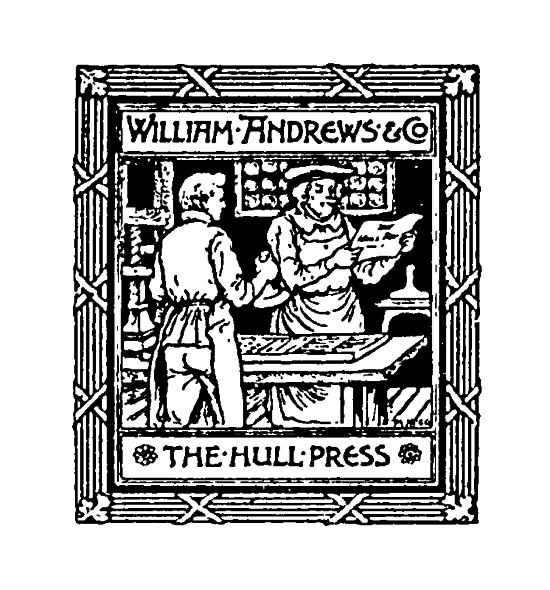
Devilled Egg
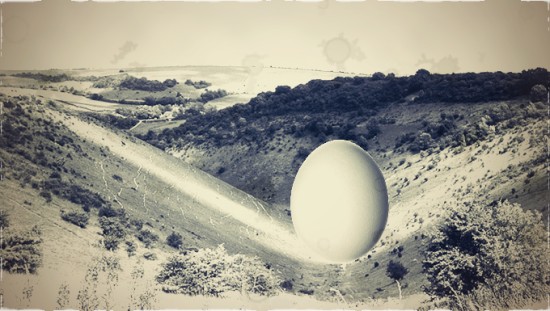
Bank Holiday Weekend: Easter egg hunt every day, 19th–21st April, 11:00am–3:00pm, Stone Seat, Devil’s Dyke. And on Monday 21st April only, 10:45–12:00, Easter egg rolling at the Dyke.
South Downs PLOD 2014
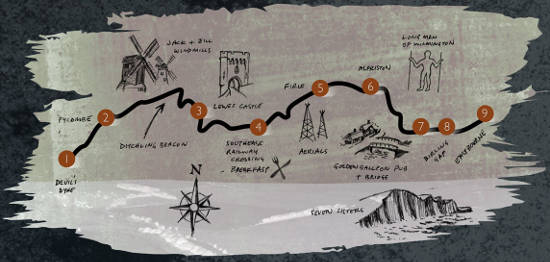
Your chance to walk from Devil’s Dyke to Beachy Head starting at midnight on 25th July for just £150.00 per five-person team (one in a car). Details here.

